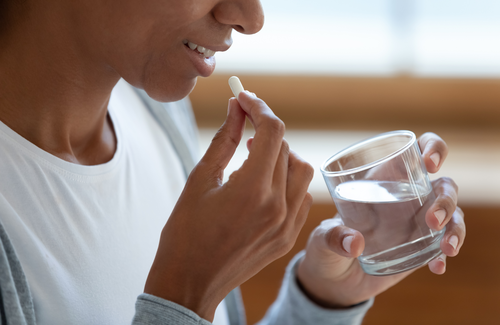
Early real-world data from Zimbabwe on the dapivirine vaginal ring shows a similar rate of new HIV acquisitions between women using the ring and oral PrEP, Jabulani Mavudze of Population Solutions For Health in Harare told the INTEREST 2023 conference in Maputo, Mozambique this week.
The study also found that more rural than urban women preferred the ring, and that more women continued to use the ring for several months.
There are approximately 31,000 new HIV cases in Zimbabwe annually, and adolescent girls and young women are disproportionately affected, with an incidence of 0.54% (compared to 0.20% among young men).
Zimbabwe was the first country to approve the use of the vaginal ring, in July 2021, with Kenya, South Africa, Uganda and Zambia having now also licensed it. The World Health Organization recommends the ring as an additional prevention option for women at substantial risk for HIV. The silicone ring is inserted inside the vagina and slowly releases an antiretroviral medication called dapivirine over one month, providing an alternative to daily pills.
To expand consumer choice for prevention, the Zimbabwean Ministry of Health and Child Care, Population Solutions for Health, PSI and USAID/PEPFAR are currently implementing a demonstration project in assessing the uptake and feasibility of the ring among adolescent girls and young women, including young women selling sex.
Beginning in May 2022, high-risk young women between 18 and 25 years living in eight districts in Zimbabwe were enrolled. They could choose between oral PrEP and the ring, with 1032 choosing the ring. The ongoing study follows up vaginal ring participants monthly for six months, with HIV testing at every monthly visit.
The majority of the participants had received secondary education (71%), were single (50%), and lived in rural settings (74%). The largest group (44%) reported two to three sexual partners in the past six months.
Almost all participants based in rural areas opted to use the ring, while just over half of urban participants chose the ring.
Of those who chose the ring, 86% continued in the second month, while 76% of oral PrEP users continued. In month four, 64% of ring users vs 59% of oral PrEP users continued with the prevention options.
From the first six months, eight (0.78%) vaginal ring users acquired HIV. The researchers say this is comparable to the number of infections among oral PrEP users in other studies, but they did not provide data from their own cohort.
Analysed by visit, six ring users tested HIV positive in the first month, two in the second month, two in the third, and none between the fourth to sixth months.
Five of the six clients who tested positive in the first month all reported that they did not remove the ring at any point. Mavudze explained that they most likely had been in the window period when they were tested on study entry, meaning they already had HIV but it was too soon for a test to detect it. The sixth participant from the first month removed the ring on day 24, had unprotected sex with her partner, and tested positive on her next visit.
The participant who tested positive in month two missed her appointment by one week. She mentioned removing the ring at exactly 28 days and believes that's when she acquired HIV. One client who tested positive at three months delayed her clinic visit by a whole month as she had travelled to another location where the ring was unavailable. In the third month, she tested positive.
The investigator concluded that based on the comparable seroconversion rate, higher acceptability and continuation rates, there is a need to scale up the vaginal ring in Zimbabwe.
Most ring users also reported that inserting the ring on their own was easy and self-care is feasible, implying the product's suitability in low-resource settings.
Speaking to aidsmap on the sidelines of the conference, Dr Takunda Sola from Zimbabwe’s Ministry of Health said the country had been carrying out implementation research in quasi-private clinics and NGOs serving young women. It is about to start implementation research in public facilities, with wider scale-up after that.
The government will be measuring acceptability, efficacy and costs. The ring itself may cost somewhere between $12 and $25, but that doesn't include other implementation costs such as staff being reallocated from their other responsibilities.
Mavudze J et al. HIV sero-conversions among adolescent girl and young female dapivirine vaginal ring (DPV-R) users: early learnings from a demonstration project in Zimbabwe. INTEREST 2023, Maputo, abstract 2, 2023.


